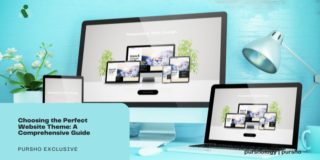Opinions expressed by Entrepreneur contributors are their own.
In this tech market, it can be difficult for leaders to stand out from the crowd. Your company’s success depends on how deliberately you can differentiate your offering from that of the competition.
Successfully differentiated B2B high tech businesses consistently develop unique products, services and customer experiences. They focus on creating a sustainable, distinctive positioning that sets them apart from their peers. Here’s how to create a winning messaging strategy.
Related: 3 Things Marketers Can Learn From the Media
Define your terms
Differentiators comprise a unique set of benefits that sets your business apart from your competition. To suss out your own solution, use this process to:
1. Evaluate your competition
Understand their strengths and weaknesses. What can they do better? Where do they fall short? Take a look at how they advertise themselves. What do they highlight? What don’t they talk about?
2. List your benefits, similarities and differences
Why should a customer do business with your company instead of with a competitor? What can you offer that a competitor does not? In what ways do you overlap with your competition?
3. Put yourself in your customers’ shoes
Identify all the steps a patron takes on the buyer’s journey, from awareness to consideration to purchase. What does your customer expect and how do you meet those expectations? What motivates their buying behavior? What are their pain points? Do they agree with your value proposition?
Rank and file
Rate each differentiator on the following dimensions: What is the level of importance to target customers? What is the ease of achieving and sustaining the differentiator? I liken this to escape velocity. Beyond, how easy is it for you to establish and maintain the competitive advantage, how fast can they outpace you? Other considerations include the relevance to your vision — the strongest differentiators support these elements. Finally, look for the highest scores on all dimensions noted above and identify the lead one.
Related: Why Customer Champions Need to Be a Part of Your Marketing Strategy
Messaging and personas
You’ve now got your lead differentiator and several supporting ones. Weave these into the messaging and content creation process. Each should be easy to understand in language that your target customer uses. Ensure the messaging is consistently incorporated in everything you do: website, brochures, presentations, speaking points and social media.
Now, consider the power of personas: They help you figure out how to reach people based on what matters most to them, which in turn helps effective marketing and PR pros deliver the right messages to the right people at the right time. Personas help to focus keyword research efforts and are used as references when crafting copy.
You must understand your buyer personas and address your strategy to them – and you must check your data to ensure you’re on the right track. Companies may do this work in-house or choose to work with a technology PR agency to get the expert guidance they need. The surest way to sustained success is by defining the differentiators that matter to your mission and your buyer personas.
Related: Key Strategies for Marketing New Versus Existing Products




